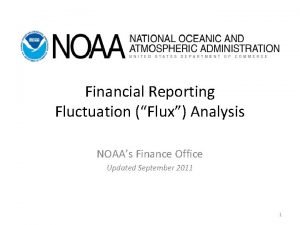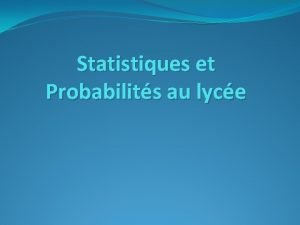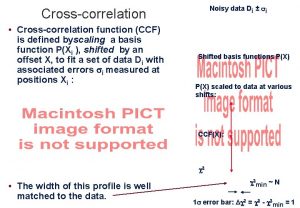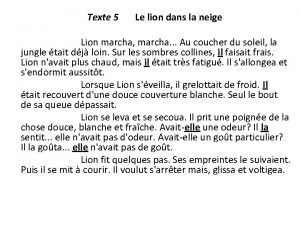Crosscorrelation and fluctuation characteristics of LION data P

















- Slides: 17

Cross-correlation and fluctuation characteristics of LION data P. Király KFKI Research Institute for Particle and Nuclear Physics Budapest, Hungary

Revival of a dying LION

The spacecraft that came in from the cold Comparison of p detectors 1 and 2 (D 1, D 2) of telescope 2 (T 2) for 1998, the year when SOHO was lost for three months. It is readily seen that the background of D 1 was much reduced, while that of D 1 changed less. The backgrounds of e-p detectors (for T 1) were only slightly reduced. LION data for 1998

LION background reduction in 1998 when SOHO was temporarily „lost”

Continuing background in the lowestenergy channels of Telescope 2 over most of 1997, the year preceding the unexpected „deep freeze” of all SOHO instruments.

Recent (2004 -2005) LION data illustrate that Telescope 2, Detector 1 provides the most reliable results. No excessive background is present. We use that channel for both cross-correlation and K parameter analysis.

The K-parameter: maximum vertical deviation K

Energy dependence of the mean K over 9 ISEE-3 periods (the periods are about 6 months long, between 1978 and 82)

Mean yearly K parameters and standard deviation parameters for the three lowest energy channels of the CPME instrument aboard IMP-8. The parameters were averaged over 28 years.

Mean yearly K parameters (over 28 years) of the IMP-8 CPME ion detectors for 10 energies, with Gaussian fit.

Cumulative fluence plots for 7 proton energies of LION data for 1999 (Telescope 2, detector 1). Energy increases from left to right and top to bottom. It is seen that the K parameter (maximum vertical distance from the diagonal) tends to increase with increasing energy.

Change of the mean yearly K parameter with energy for LION

Cross-correlations of LION channels 1 and 7 from 1999 to 2002

IMP-8 yearly ion fluences for the three lowest energies (lowest energy above)

Yearly K parameters for three IMP-8 energies (high above)

Energy dependence of mean K parameters and of log yearly fluences for the Goddard GME instrument aboard IMP-8. Sudden jumps indicate: regime-dependent background can heavily distort both plots. Note the break points in both plots when the detection regime changes

Discussion Meeting of ISSI Science Team 70 Bern, 27 to 31 March 2006.
 Contoh random fluctuation
Contoh random fluctuation Cross fluctuation test in ranula
Cross fluctuation test in ranula Flux analysis in accounting
Flux analysis in accounting Contoh fluctuation stock
Contoh fluctuation stock Intervalle de fluctuation
Intervalle de fluctuation Bande de fluctuation du dirham
Bande de fluctuation du dirham Chorister synonym
Chorister synonym The lion the witch and the wardrobe chapter 13 summary
The lion the witch and the wardrobe chapter 13 summary William shakespeare lion king
William shakespeare lion king Little friends may prove to be great friends
Little friends may prove to be great friends Exposition
Exposition King lion and the beetle
King lion and the beetle The monkey and the dolphin moral lesson
The monkey and the dolphin moral lesson Climax of the lion and the mouse
Climax of the lion and the mouse The lion's ecological niche includes its behavior and
The lion's ecological niche includes its behavior and The falcon cannot hear the falconer meaning
The falcon cannot hear the falconer meaning The lion the witch and the wardrobe chapter 5
The lion the witch and the wardrobe chapter 5 A reference to a famous person place or event
A reference to a famous person place or event

































